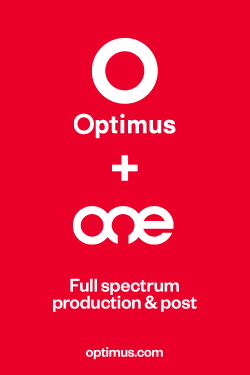
Each June, a flood of rainbow logos and glittering campaigns hit our feeds as brands scramble to celebrate Pride Month. And while visibility is important, let’s be honest: for too many companies, Pride has become more of a seasonal trend than a meaningful commitment.
In today’s socio-political climate, where LGBTQ+ rights are increasingly under attack in legislatures, school boards, and even corporate boardrooms, brands can’t afford to treat Pride as a temporary vibe. It’s not enough to roll out a rainbow-colored product line or feature a same-sex couple in an ad once a year. In 2025, representation without advocacy feels hollow at best, exploitative at worst.
Google Calendar recently removed Pride Month, along with other cultural heritage months like Black History Month and Women’s History Month, from its default listings in mid-2024. Google stated that the change was made to focus on displaying only public holidays and national observances. This decision has led to criticism from users and industry observers who believe it undermines the importance of these cultural events.
If brands want to win over LGBTQ+ audiences—and more importantly, be on the right side of history—they need to treat Pride as the beginning of a conversation, not the end.
The Current Climate Demands More
Across the U.S. and globally, anti-LGBTQ+ rhetoric has escalated. Laws targeting trans youth, drag performers, and gender-affirming care have passed in multiple states. Book bans are disproportionately affecting queer authors and stories. Online hate and misinformation are on the rise.
And yet, some of the same brands that celebrate Pride in June quietly pull ad dollars from queer content, stay silent during policy debates, or worse—support politicians whose agendas directly harm the community.
Performative allyship isn’t just outdated—it’s dangerous.
So What Can Brands Actually Do?
- Back Words with Action
It’s easy to say “Love is Love.” It’s harder—but infinitely more powerful—to show that love through funding LGBTQ+ nonprofits, employee protections, and lobbying for equality. Consumers, especially Gen Z, are deeply attuned to whether a brand’s actions align with their statements. - Show Up Beyond June
Queer lives don’t pause after Pride. Elevate LGBTQ+ voices in your campaigns year-round. Celebrate queer love stories in holiday ads. Highlight LGBTQ+ creators during award seasons, sports events, and major cultural moments. Visibility should be sustained, not seasonal. - Protect Your People
Inside the company, offer comprehensive benefits for LGBTQ+ employees, including gender-affirming healthcare and trans-inclusive policies. Create ERGs (Employee Resource Groups) with real budget and power. Let queer employees lead—and listen when they speak. - Stand Firm When It’s Uncomfortable
It’s easy to support the LGBTQ+ community when it’s profitable. But true allyship shows when it costs something—when brands risk boycotts or political backlash to stand up for basic human rights. That’s not “going woke,” it’s leading with integrity. - Put Queer Creatives at the Center
If your Pride campaign was made without any LGBTQ+ creatives involved, that’s a problem. From ideation to execution, queer people should be at the center of how their stories are told.
The Brands Getting It Right
Some brands are already setting the bar:
- Ben & Jerry’s has long tied its brand purpose to social justice. They don’t just celebrate Pride—they advocate for LGBTQ+ rights year-round, from policy lobbying to educational campaigns and meaningful donations.
- Skittles partners annually with GLAAD not just for colorful packaging, but with funds and year-round content dedicated to amplifying LGBTQ+ voices.
- The North Face has maintained partnerships with queer athletes and creators beyond June, even in the face of backlash—standing by their values and collaborators without flinching.
- Absolut Vodka has supported LGBTQ+ artists and spaces for decades and continues to prioritize queer nightlife and storytelling around the world.
These brands aren’t perfect, but they’re trying—and doing so consistently. They understand that allyship is a practice, not a campaign.
Pride Is Not a Hashtag
At its core, Pride was—and still is—a protest. A demand for dignity, rights, and equality. It is rooted in resistance, led by Black and brown trans women like Marsha P. Johnson and Sylvia Rivera, not marketing executives.
Brands have a platform. They have influence. And yes, they have power. That power can either be used to push culture forward—or to co-opt it for a quick engagement boost.
The choice is yours. But if you’re not showing up for the LGBTQ+ community all year long, don’t expect a standing ovation for your rainbow avatar in June.

Colin Costello is the West Coast Editor of Reel 360 News. Contact him at colin@reel360.com or follow him on Twitter at @colinthewriter1
REELated:
Macy’s, Calvin Klein, Bluebella and more celebrate Pride











